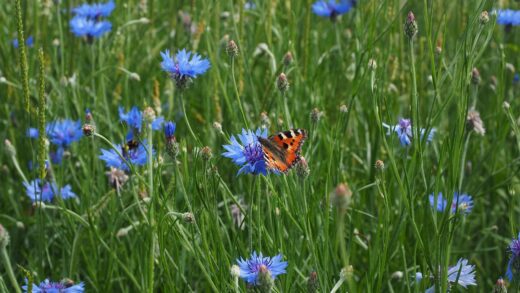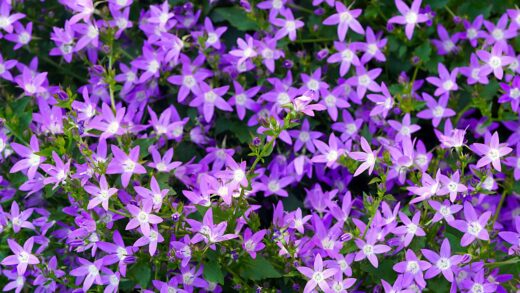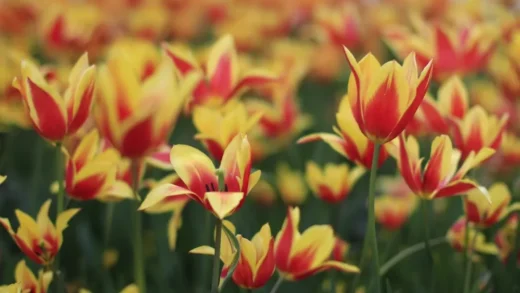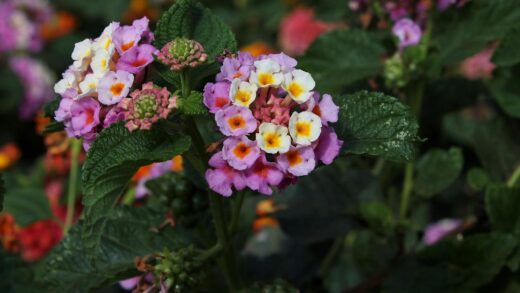Providing the appropriate nutritional support is a key aspect of cultivating healthy and floriferous amethyst hyacinths, yet it is a task that calls for a delicate touch and a „less is more“ philosophy. These charming bulbs are not greedy feeders and have evolved to thrive in the relatively lean, gritty soils of their native alpine and Mediterranean habitats. Consequently, an overly aggressive fertilization regimen can cause more harm than good, leading to weak growth and a diminished floral display. The goal is not to force rapid, lush growth, but rather to ensure the soil contains a sustainable, slow-release source of the essential nutrients needed for robust bulb development and reliable flowering.
The primary nutritional needs of Brimeura amethystina revolve around the three main macronutrients: nitrogen (N), phosphorus (P), and potassium (K). While nitrogen is essential for leafy growth, an excess of it can be detrimental to bulbs, promoting soft, sappy foliage that is susceptible to pests and diseases, often at the expense of flower production. Phosphorus is vitally important for the development of a strong and healthy root system, which is the foundation of the plant’s ability to absorb water and other nutrients. Potassium plays a crucial role in overall plant vigor, disease resistance, and, most importantly for bulbs, the process of carbohydrate storage and flower bud formation.
In a garden with reasonably fertile and well-structured soil, particularly one that is regularly amended with organic matter, amethyst hyacinths may require very little in the way of supplemental feeding. The gradual decomposition of organic materials like compost or leaf mould provides a slow and steady release of a wide range of nutrients in a form that is readily available to the plants. This approach fosters a healthy soil ecosystem, rich in microbial life, which in turn helps to make nutrients available to the plant’s roots. Therefore, the first step in any feeding program should be to focus on building a healthy, living soil.
For bulbs grown in containers or in very poor, sandy soils, a more direct approach to fertilization may be necessary, as the nutrient reserves in these situations can be depleted more quickly. Even in these cases, however, feeding should be modest and carefully timed. The aim is to supplement the existing nutrient supply, not to replace it entirely with concentrated feeds. Over-fertilization is a common mistake that can lead to the build-up of salts in the soil, which can damage the delicate root system of the bulbs and inhibit their growth over the long term.
Choosing the right type of fertilizer
When selecting a fertilizer for amethyst hyacinths, it is crucial to look for a formulation that is specifically tailored to the needs of flowering bulbs. This generally means choosing a product that has a balanced or lower nitrogen content relative to its phosphorus and potassium content. A fertilizer with an N-P-K ratio such as 5-10-10 or a similar profile is often ideal. The lower nitrogen level provides enough for healthy leaf development without encouraging excessive, weak growth, while the higher levels of phosphorus and potassium directly support the critical functions of root growth and bulb maturation.
Weitere Artikel zu diesem Thema
Granular, slow-release fertilizers are an excellent choice for feeding bulbs in the ground. These products are designed to break down gradually over a period of weeks or months, providing a sustained supply of nutrients that aligns well with the plant’s growth cycle. This avoids the sudden, shocking influx of nutrients that can be delivered by highly soluble liquid feeds, which can sometimes burn the plant’s roots if applied incorrectly. A single application of a granular bulb fertilizer in early spring is typically sufficient for the entire growing season.
Organic fertilizers offer a fantastic, gentle alternative to synthetic chemical feeds. Bone meal is a traditional and highly effective organic amendment for bulbs, prized for its high phosphorus content which is released slowly into the soil, promoting strong root development. Another excellent organic option is a balanced organic granular feed derived from sources like alfalfa meal, rock phosphate, and greensand. These materials not only supply nutrients but also help to improve the overall structure and biological activity of the soil, providing long-term benefits beyond simple plant nutrition.
For container-grown plants, a liquid fertilizer can be a practical option, but it must be used with caution. If you choose to use a liquid feed, such as one derived from seaweed or comfrey, it is advisable to dilute it to half or even a quarter of the manufacturer’s recommended strength. This diluted solution can be applied once or twice during the early spring growth period, from the time the leaves emerge until the flower buds begin to show color. It is important to stop feeding once the plant is in full flower, as further feeding at this stage will not benefit the current year’s display and can interfere with the plant’s natural transition into dormancy.
The importance of timing in application
The timing of fertilizer application is just as critical as the choice of fertilizer itself. The most effective time to provide nutrients to amethyst hyacinths is during their period of active growth in the spring. The ideal window for application is just as the new shoots are emerging from the soil. At this stage, the newly developing root system is ready to absorb and transport nutrients to the growing foliage and developing flower stalks. Feeding at this time ensures that the plant has the resources it needs to produce the best possible floral display.
Weitere Artikel zu diesem Thema
Applying fertilizer too late in the season, for example, when the plant is already in full bloom or starting to die back, is largely ineffective and can be counterproductive. The plant is beginning to shut down its metabolic processes in preparation for dormancy, and its ability to take up nutrients is greatly reduced. Late applications of nitrogen, in particular, can disrupt the natural senescence of the foliage and can stimulate a late flush of weak growth that makes the bulb more vulnerable to rot and disease during its dormant period.
A secondary window for applying certain types of fertilizer exists in the autumn. This is an excellent time to incorporate a slow-release, high-phosphorus amendment like bone meal into the soil. A light scattering of bone meal worked into the top layer of the soil around the area where the bulbs are planted will slowly break down over the winter months. This provides a readily available source of phosphorus for the new roots that the bulbs will begin to grow during the autumn and winter, setting them up for strong and vigorous growth in the spring.
It is also important to consider the method of application. For granular fertilizers, the best practice is to sprinkle the recommended amount evenly over the soil surface around the plants, avoiding direct contact with the emerging foliage. After application, it is beneficial to gently scratch the granules into the top inch of soil with a hand fork or cultivator. This helps to integrate the fertilizer into the root zone and prevents it from being washed away by heavy rain. Watering the area after application can also help to activate the granules and start the process of nutrient release.
Amending soil at planting time
The best opportunity to provide a long-lasting nutritional foundation for your amethyst hyacinths is at the time of planting. By thoroughly preparing the planting hole or bed with the right amendments, you can create a fertile environment that will sustain the bulbs for several years, often eliminating the need for regular annual feeding. This initial soil preparation is arguably the most important step in the entire fertilization process.
When preparing a new bed for planting, it is highly beneficial to incorporate a generous amount of well-rotted organic matter into the soil. Materials like garden compost, leaf mould, or well-decomposed manure will not only improve the soil’s structure and drainage but will also provide a rich and diverse source of slow-release nutrients. Dig this organic matter into the top 6 to 8 inches of the soil to ensure it is well-integrated into the area where the bulbs‘ roots will be growing.
In addition to general organic matter, adding a specific bulb-boosting fertilizer to the planting hole can give your amethyst hyacinths an excellent start. A small handful of bone meal or a specially formulated granular bulb food mixed into the soil at the bottom of the planting hole provides a targeted supply of nutrients right where the new roots will form. It is important to mix this fertilizer into the soil rather than placing the bulb directly on top of it, as direct contact with concentrated fertilizer can sometimes cause chemical burns to the basal plate of the bulb.
This pre-planting soil enrichment creates a nutrient reservoir that the bulbs can draw upon for years to come. In many garden settings, if this initial preparation is done well, the only additional feeding required in subsequent years might be a light top-dressing of compost every other year or so to replenish the organic matter content of the soil. This approach focuses on creating a self-sustaining, healthy soil environment rather than relying on a cycle of constant chemical inputs, which is ultimately better for the plants and the wider garden ecosystem.
Recognizing nutrient deficiencies
While over-fertilization is a more common problem with amethyst hyacinths, it is still possible for them to suffer from nutrient deficiencies, especially if they are grown in very poor, neglected soil or have been in the same container for many years without repotting. Recognizing the signs of a deficiency can help you to correct the problem and restore the plant to good health. A general lack of vigor, stunted growth, and consistently poor or non-existent flowering are all indicators that the plant may be lacking essential nutrients.
A specific deficiency in nitrogen will often manifest as pale, yellowish-green leaves (a condition known as chlorosis) and weak, spindly growth. If the entire plant appears washed-out and lacks vitality, a lack of nitrogen could be the cause. In this case, a single, carefully measured application of a balanced liquid fertilizer in early spring can help to correct the issue. However, be cautious not to overcompensate, as too much nitrogen will create its own set of problems.
A phosphorus deficiency, while harder to diagnose visually, typically results in poor root development. This can lead to a plant that is easily stressed by dry conditions and may have a reduced capacity to flower. Sometimes, a phosphorus deficiency can cause the leaves to take on a slightly purplish or reddish tinge. If you suspect a lack of phosphorus, a top-dressing of bone meal in the autumn is the most effective long-term solution.
A lack of potassium can compromise the overall resilience of the plant, making it more susceptible to diseases and environmental stresses like cold or drought. It can also interfere with the proper maturation and ripening of the bulb, leading to a decline in flowering over time. Many balanced organic fertilizers and wood ash (used sparingly and only on neutral to acidic soils) are good sources of potassium. Regularly top-dressing with well-rotted compost is also an excellent way to ensure a steady supply of potassium and a wide range of essential micronutrients.



















